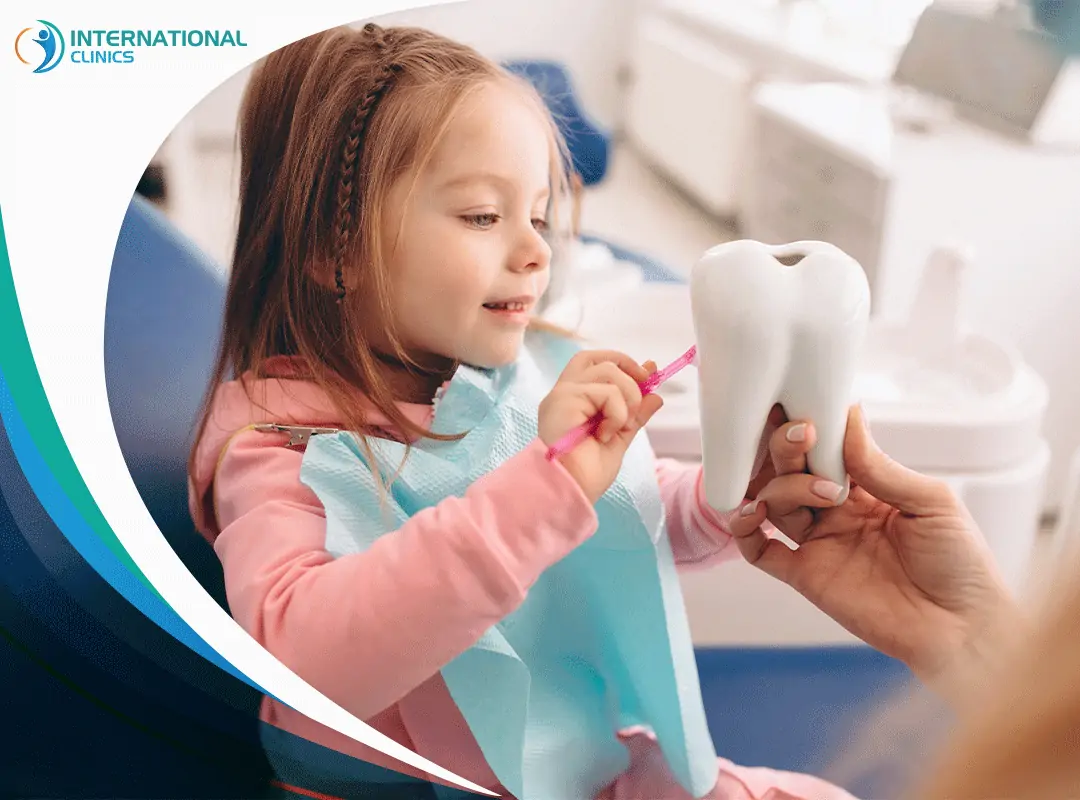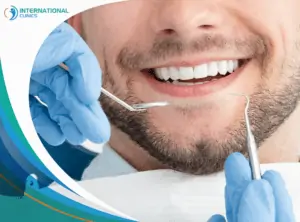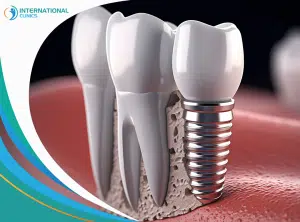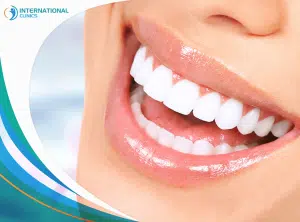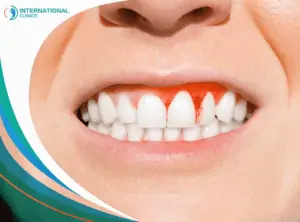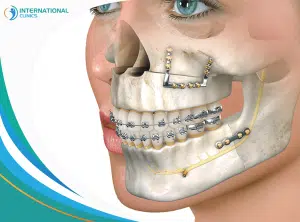Pediatric dentistry is generally difficult to deliver because children are hard to control and montoir during dental procedures.
To make things easier, an increasing number of doctors and researchers have started to pay attention to “smart pediatric dentistry”, which incorporates intelligent technologies and gadgets to help deliver dental services to children with less struggle and discomfort.
The need for this new trend has increased because the treatment of children with dental problems greatly differs from older age groups. Newborns, for example, cannot express exactly what they suffer from. This increases the need for doctors who have greater expertise and practical experience in using smart applications to provide services such as dental implants in Turkey.
What Smart Pediatric Dentistry?
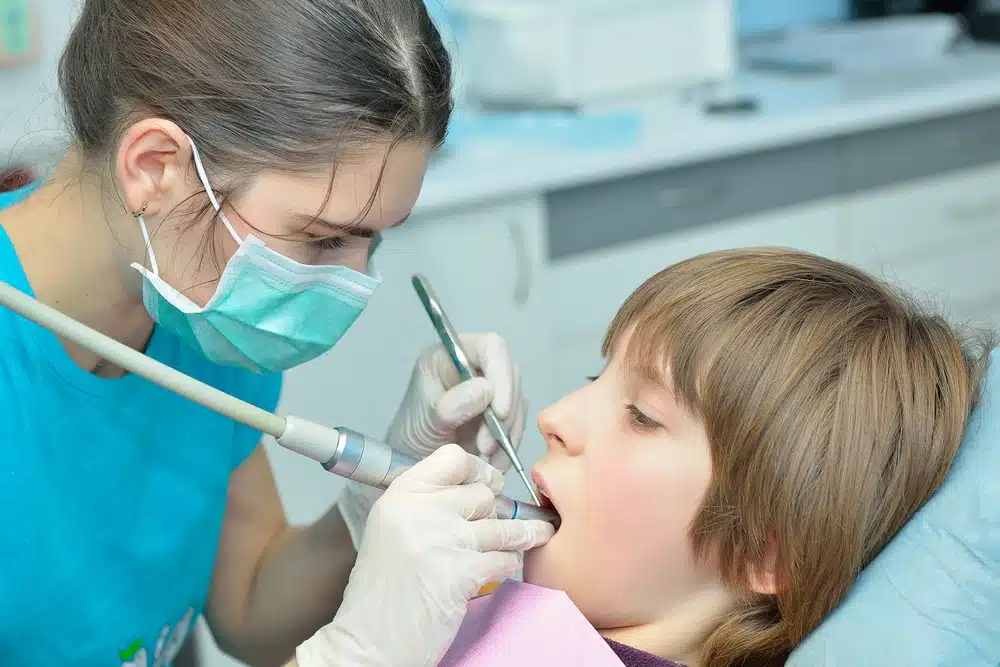
Smart pediatric dentistry refers to using smart or digital applications and devices to enrich and facilitate the experience of children and kids during dental procedures. Dentists are using different approaches to utilize new, smart technologies in their practice to provide better, more comfortable treatment experiences to children and their parents. There is also a popular clinic in Utah, United States called “Smart Pediatric Dentistry”.
The field of pediatric dentistry focuses on treating the problems that occur in the teeth, jawbones, and gums of newborns and older children. The term “pediatric dentistry” first appeared in 1909, when some American doctors started to provide dental services to children in the United States. This was an unprecedented event that didn’t occur before. Some of these doctors published a book on pediatric dental treatments in 1925.
American Dental Association quickly recognized pediatric dentistry and has mandated a bachelor’s degree in oral and maxillofacial surgery, followed by studying and obtaining a specialized master’s degree in pediatric dentistry for any doctor who seeks recognizable specialization in this branch of dentistry.
It’s worth noting that there are other related subspecialties for pediatric dentistry, such as pediatric dental treatments, pediatric oral trauma, and pediatric anesthesia for children.
In recent times, two American institutions have become responsible for organizing this specialty: the American Academy of Pediatrics (AAP) and the American Academy of Pediatric Dentistry (AAPD).
The new smart pediatric dentistry is still a matter of discussion among experts who emphasize the importance of visiting the doctor’s office as soon as the first tooth appears to maintain the dental health of children without causing a huge impact on their quality of life.
Benefits of Smart Pediatric Dentistry
Smart pediatric dentistry has many benefits and advantages for dentists and children. Below are some of these benefits:
- Provides a better treatment experience with more comfort and less anxiety for children and their parents.
- Makes the treatment process less difficult for the dentist and less demanding, especially when dealing with less cooperative children.
- Integrates new technologies that make it easier for the dentist to carry out different scanning and treatment procedures.
- Adds a sense of excitement and entertainment to the whole treatment process.
Applications of Smart Pediatric Dentistry
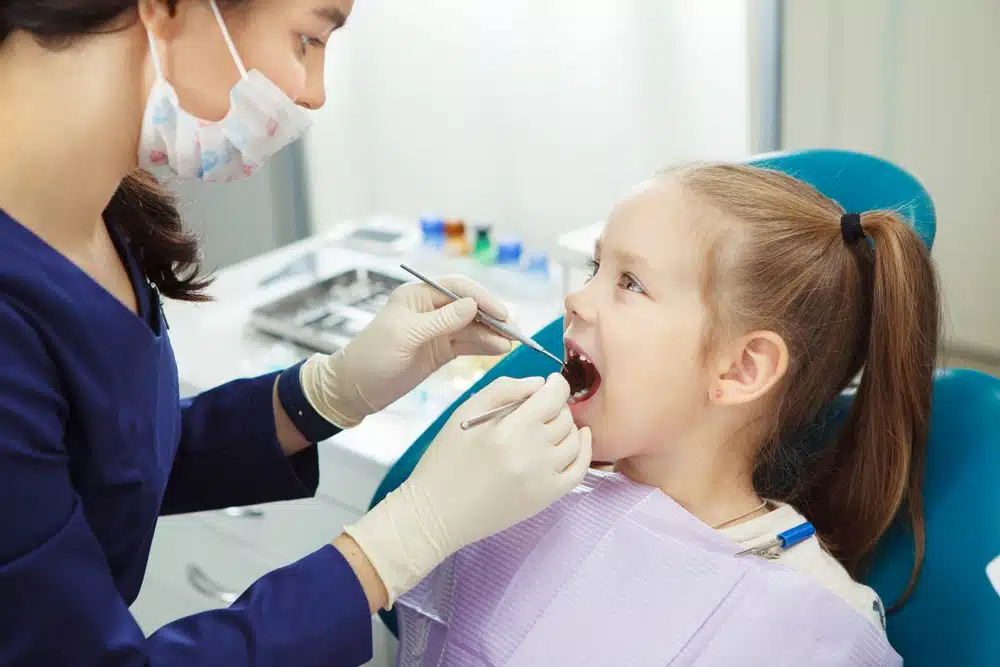
Smart technology has different roles to play in the provision of dental services according to a study. Some of the digital applications that doctors can use in their offices include:
Distractions by Storytelling
It’s very easy to find smart applications and games that provide animated stories and entertaining activities to distract the attention of children during dental procedures. Some dentists also use iPads, large TV screens, and interactive interfaces to encourage children and leave a positive impression in their minds about visiting the dentist’s office.
Digital Scanners
Dentists often find themselves in a difficult situation when asking children to cooperate during scanning and screening tests. Thankfully, there are new digital scanners that can create a more convenient and less worrisome experience for children. These scanners decrease the visit time of the child and facilitate the installment of dental braces and crowns for children.
Digital Anesthetic Delivery Systems
The newer local anesthetic delivery systems and techniques have changed the stereotypical idea about dental anesthesia, especially for children. The painful, troublesome syringes of local anesthetics are no longer needed as new systems take their role in many dental clinics. Some of these systems use vibrations to prevent pain.
Besides these anesthetic systems, a recent study described a new material that can contribute to the foundation of smart pediatric dentistry called “silver diammine fluoride (SDF)”. According to the researchers, this material can be effective in preventing and arresting caries in children during pandemics such as Covid 19.
Why Pediatric Dentistry Is Important?
Dental problems vary among children. This reinforces the importance of pediatric dentistry in preventing, diagnosing, and treating dental problems among this age group. The impotence of pediatric dentistry appears in the following points:
- Refers patients to undergo x-rays and other diagnostic tests to identify the exact nature of the conditions they have and to draw up a proper treatment plan.
- Educates parents about the best ways to deal with children’s teeth and the correct feeding pattern in their early years through newsletters, courses, or conferences.
- Implements surgical intervention if necessary to treat structural problems of soft tissues, jawbones, and teeth.
- Handles children gently and uses appropriate anesthesia doses for them, which requires special steps compared to the elderly.
- Helps diagnose jaw alignment issues and uses orthodontic appliances to treat them.
- Provides the right urgent intervention to deal with children suffering from extreme dental pain.
- Follows up on the development and growth of teeth and jaws in children.
- Resolves the dental problems of children with special needs.
Problems Addressed by Smart Pediatric Dentistry
Pediatric dentistry addresses many problems in children and adolescents. We can review some of them as follows:
Tooth decay
Tooth decay or cavities is one of the most reported dental problems in children and it falls under what’s known as “Endodontics“. Indeed, the majority of children who visit dentists do so because of pain related to tooth decay. As the dentist removes the decayed part of the tooth and replaces it with a filling, the child may cry and feel anxious. Using smart gadgets such as iPads or gaming consoles can distract the attention of the child and make the treatment more seamless.
Jaws Malalignment
Dental malocclusion or misalignment is among the common problems treated by a pediatric dentist. It occurs when teeth in the upper jaw fail to align correctly with those in the lower jaw. It’s important that the teeth in the jaws don’t have wide spacing between them. The edges between the teeth and the molars of the jaws should be consistent. Causes of jaws malalignment include:
- Hormonal disorders: Hormonal disorders in children may cause dental misalignment, especially growth hormone problems.
- The presence of milk teeth: If milk teeth (deciduous teeth) remain for a long time in the mouth, this may cause permanent teeth growth problems in the future.
- Genetic factors: Genetic factors play a role in determining the size, number, and shape of human teeth. Experts attribute the possibility of dental misalignment to genetic factors in many cases.
- Early loss of temporary teeth: If the child loses the temporary teeth early, this may lead to a problem in the jawbones and cause dental misalignment.
- Dental abnormalities: Sometimes the permanent teeth don’t grow and remain in the jawbone area. This affects the shape of the teeth in the end.
- Finger sucking: The habit of finger sucking is among the causes of dental misalignment, especially if it continues after the age of six or after the growth of permanent teeth. It can cause the appearance of inclined teeth. Some experts point to artificial feeding as the cause of this habit. Others attribute it to some psychological factors.
- Tumors: If a tumor grows in the gums, this can lead to the formation of abnormal cells, which affects the nature and shape of the teeth.
Children’s Dental Injuries
Children in their early years love to move and play all the time. Hence, many of them could experience tooth fractures due to accidents or falls. If this occurs, it will require visiting a specialized treatment center to assess the situation and take proper measures.
Children’s Orthodontics
Some children suffer from dental problems due to genetic factors, including twisting or protruding teeth. The age between eight and fourteen is appropriate to undergo orthodontic treatment. During this period, most teeth and molars grow in children and become visible.
Doctors prefer to do the orthodontic treatment at an early age as this is more effective than in later years. The ability to remodel the teeth becomes easier, and the treatment doesn’t need much time because the child is still growing. If you wait until the end of adolescence, the process might become more difficult and you may need to pay extra for dental implant cost in Turkey.
Signs that indicate the need for orthodontic treatment in children include:
- The shape of the teeth and jaws is not consistent with the rest of the child’s face.
- There is a problem when opening or closing the jaw, and parents can hear abnormal sounds coming from their child’s mouth.
- The presence of teeth in unusual places.
- Early tooth loss.
- The child keeps sucking one or two fingers.
- The child only breathes through their mouth or has difficulty chewing foods.
How Can Parents Take Care of Their Child’s Orthodontics?
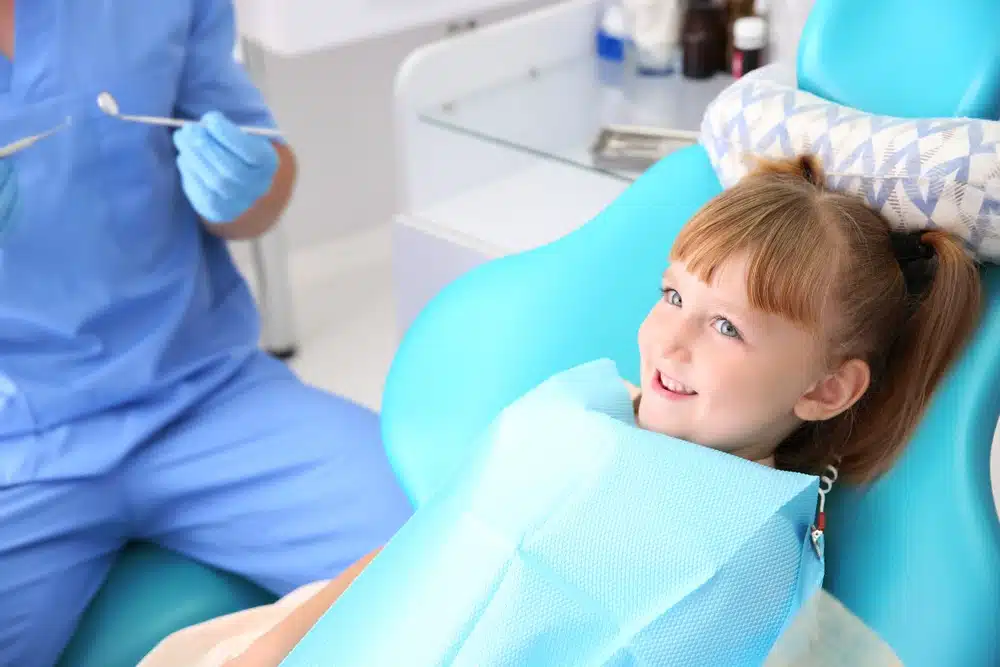
If the child has undergone orthodontic surgery, the specialists usually advise their parents to consider the following:
- Clean the back and front teeth in a correct manner to help prevent the formation of plaque on top of the orthodontics.
- Be patient when teaching the child how to use dental floss to clean their teeth.
- Avoid giving the children hard foods, such as nuts, and teach them not to open metal cans using their teeth.
- Teach children not to bite dry pens or pencils with their teeth as this may affect orthodontics.
- It’s possible to raise the protrusion of the orthodontic wire if it’s painful or harmful to the lining of the cheek.
- It’s important to contact a specialist if any problem occurs.
The Bottom Line
Smart pediatric dentistry is gaining more attention lately as more dentists and parents search for methods to alleviate children’s discomfort and anxiety associated with visiting dentists or dental clinics. A “smart” dental practice means more focus on using digital entertainment devices and advanced equipment to change the perception of children when they receive dental treatments, including orthodontics.
International Clinics appreciates smart pediatric dentistry and tries to explore the idea of using digital or smart equipment to raise the quality of dental services given to children. You can contact us immediately using the button below to explore our dental services.
Frequently Asked Questions (FAQ)
What Is the Main Goal of Pediatric Dentistry?
Pediatric dentistry focuses on promoting oral health in children and treating diseases that develop in the gums, teeth, and jaws. Dentists specialized in pediatric dentistry provide guidance on proper oral hygiene and may work with other dental professionals to provide comprehensive care.
What Is Silver Modified Atraumatic Restorative Technique?
Silver modified atraumatic restorative technique aims at stopping tooth decay and sealing teeth in just one session using a combination of two products: silver diamond fluoride and glass ionomer cement.
What Makes a Pediatric Dentist Different?
Pediatric dentist focuses on dental care for children and has specialized training and education in this area, so they are more equipped to handle children’s dental needs than general dentists or other dental professionals.
What Does Smart Stand for In Dental?
SMART is an acronym that stands for Specific, Measurable, Achievable, Relevant, and Time-bound. SMART outlines the qualities of an effective dental goal. However, “smart dental” can also refer to the implementation of smart technology in the dental practice.
What Is a Child Dentist Called?
A child dentist is also called a “pediatric dentist”. They provide dental care for children, including toddlers, kids, and teenagers. Regulatory bodies establish national standards for the qualifications and training that should be given to pediatric dentists.
How Hard Is Pediatric Dentistry?
Learning or mastering pediatric dentistry is a challenging process that requires more effort than general dentistry. It involves additional steps and requires specialized knowledge to effectively care for children’s teeth.
Is Pediatric Dentistry Stressful?
Research indicates that pediatric dentistry is a demanding profession that requires the ability to manage stress and emotions. Pediatric dentists are potentially more prone to stress than general dentists.
Read more: Hollywood Smile in Turkey
